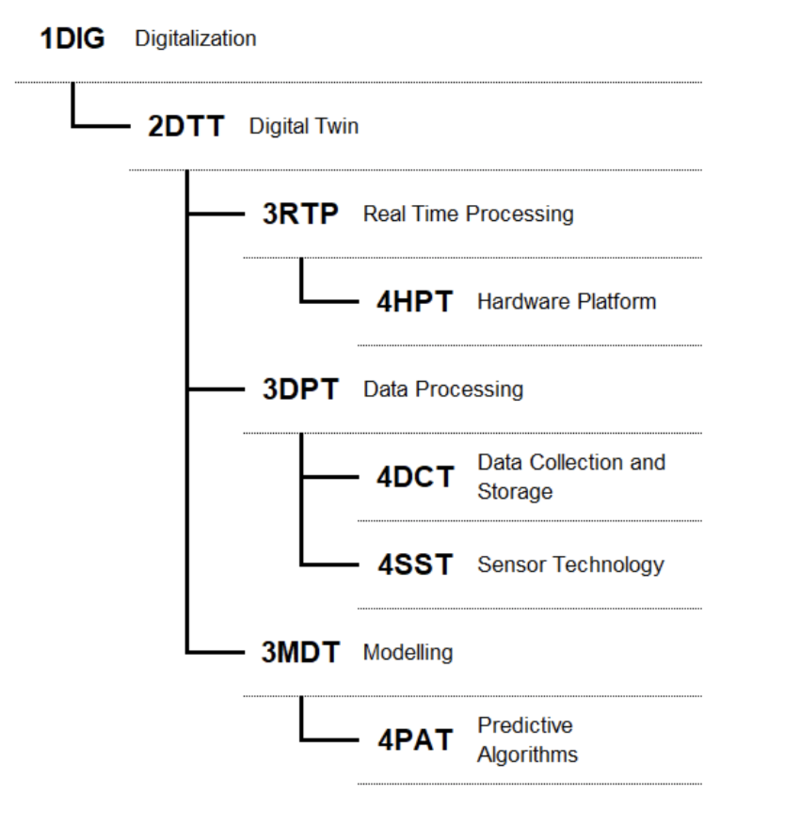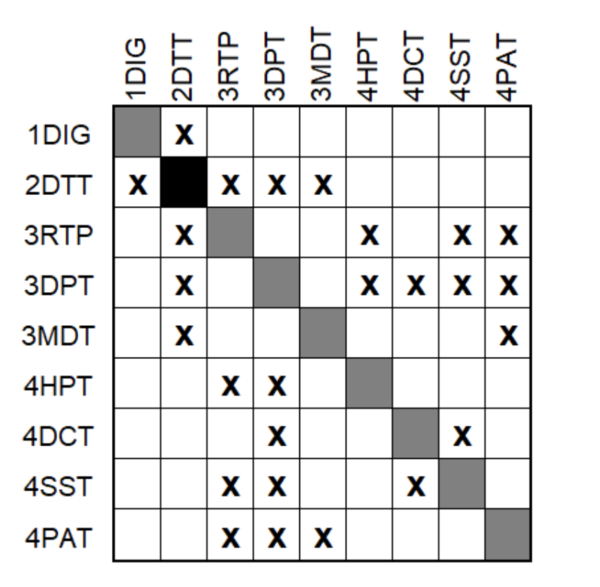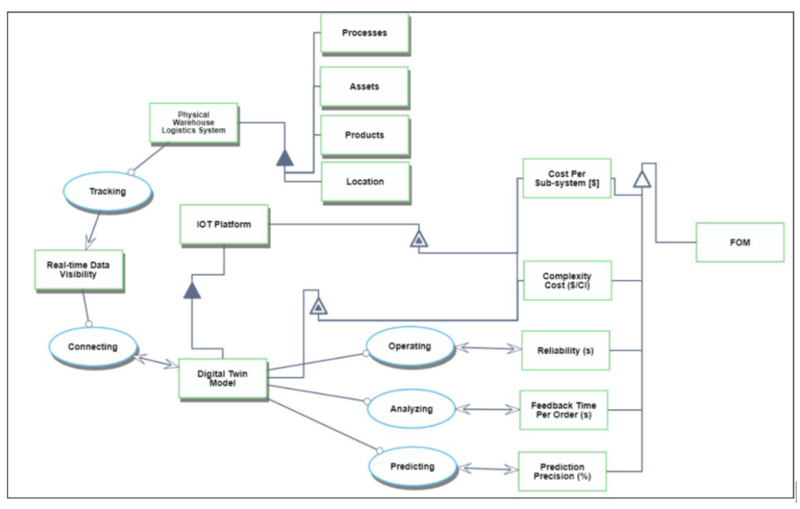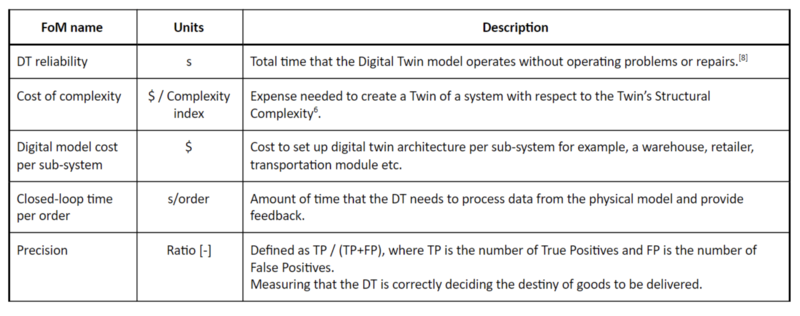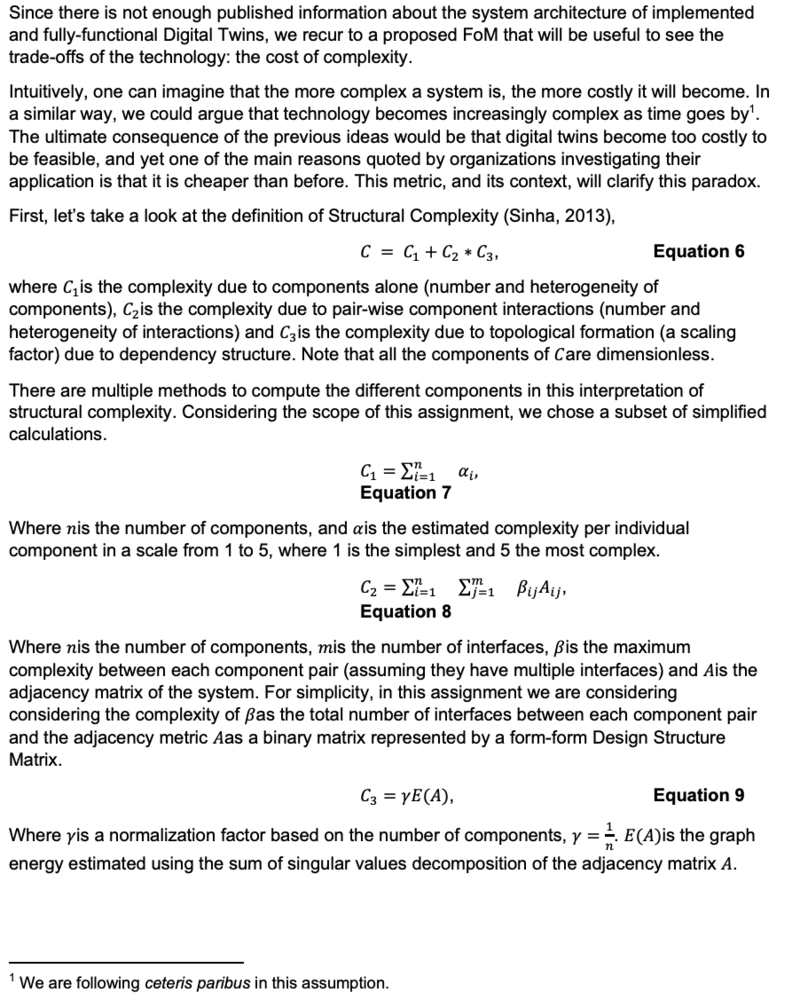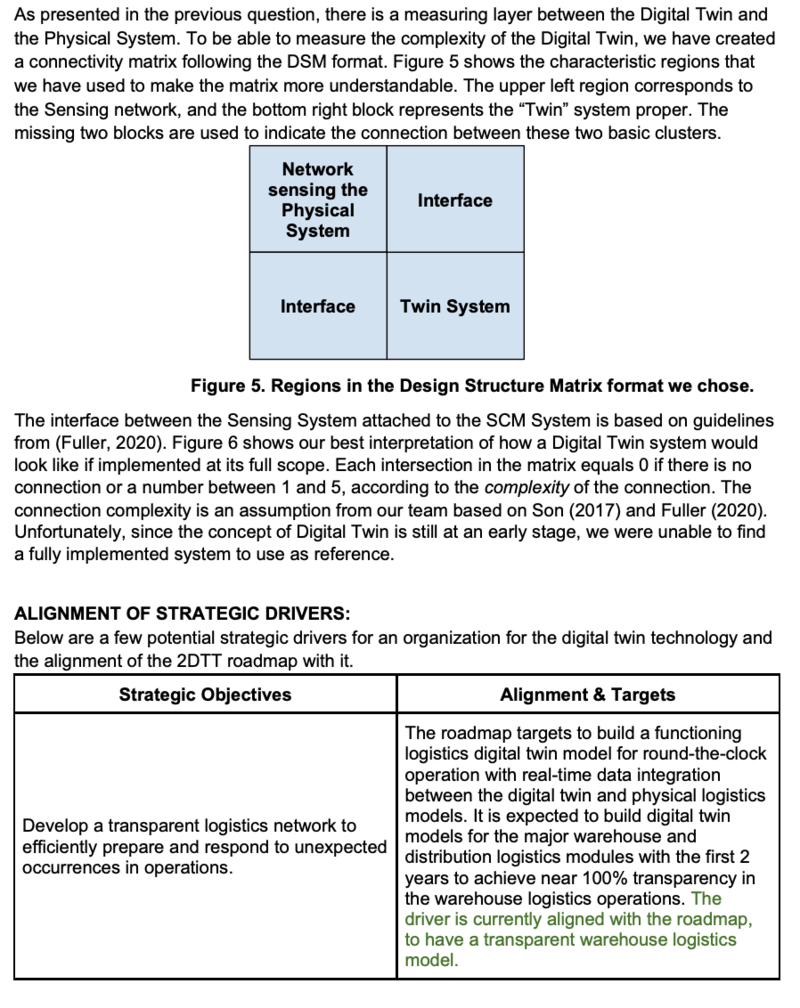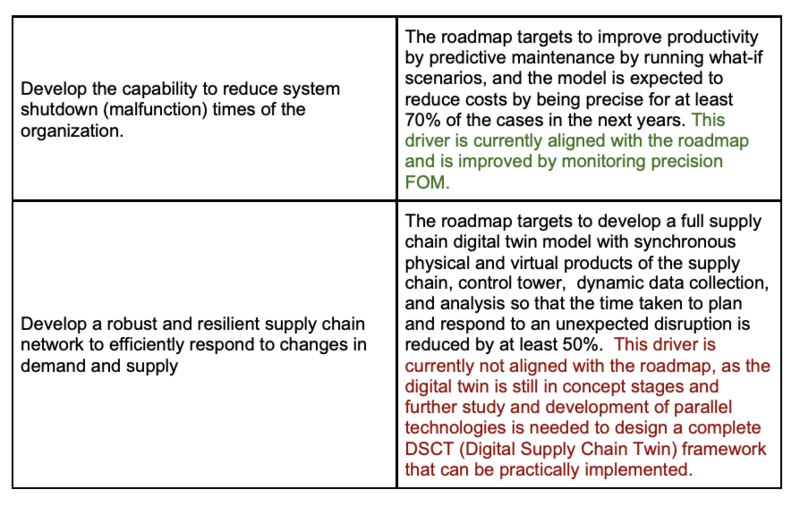Digital Twins in Supply Chain
1. Roadmap Overview
This is a technology roadmap for: 3PEM - Proton Exchange Membrane This is a “Level 3” roadmap, indicating that it addresses a technology at the subsystem level. Higher level roadmaps related to this subject would address technology progression at the market level (Hydrogen Supply) and product level (Water Electrolyzer). A short video summary and introduction to this roadmap follows here.
{{#evt: service=youtube |id=https://youtu.be/iIk_x4eQieY }}
Digital Twins in Supply Chains
The first point is that each technology roadmap should have a clear and unique identifier:
- 2DTT - Digital Twin Technology**
This indicates that we are dealing with a “level 2” roadmap at the product level, where “level 1” would indicate a market level (Digitalization of Supply Chains in our case) roadmap and “level 3” or “level 4” would indicate an individual roadmap for enabling technologies. A Digital Twin is a virtual representation of a physical system. It gathers sensor data to assess the performance of the original system and processes the information to make decisions, inform users or simulate scenarios. Although there has been an increasing awareness about the potential use of digital twins in the industry, their feasibility and actual implementation with all the claimed functionality is still not well documented. This roadmap is an attempt to shed light over what are digital twins, what technologies are needed to fulfill the claims of its promoters and how feasible the technology is. It will also present a path to develop the technology with a realistic scope, backed-up by concrete metrics.
Roadmap Overview
This roadmap is a Level 2 (Product) assessment of Digital Twins. Conceptually, the main function of this technology is "twinning", which means to reproduce as accurately as possible an existing (physical) system. The "twin" is then used as a test-bench to learn about the existing (physical) system and act on it. Digital Twins have three fundamental sub-systems, (1) a Real-Time Processing platform, (2) Data Gathering and Storage and (3) the Modelling core. Each of these components presents different challenges, which will be covered in the following sections.
Design Structure Matrix (DSM) Allocation
Digital twins in supply chain - XLP 2021/11/01 21:23 The following Figure shows the enabling technologies that compose a Digital Twin. Level 3 technologies are the main building blocks and each has some important dependencies at Level 4. It is important to keep in mind that once integrated into a system, the relationships of each of the lower level technologies becomes more complex, as they all share different relationships. Each of the instances will also have its corresponding Technology Roadmap.
The dependencies between 2DTT are made explicit in the following Figure: Note that the sequence in which they are presented has been changed in order to keep higher-level technologies at the upper left quadrant of the DSM. It is worth highlighting the role of 3DPT as the most connected enabling technology in the DSM. The reason for this is the fundamental dependence of 2DTT on data acquisition. The sensor technology and the consequent storage of all the generated data play a key role in 2DTT reaching a higher level of performance. We will elaborate in subsequent sections.
Roadmap Model using OPM
Digital twins in supply chain - XLP 2021/11/01 21:23 The following Figure shows a representation of the system around the Digital Twin and its associated value- delivering functions. Additionally, we show Figures of Merit (FoM) for each primary function is such away that they measure the actual development and impact of the technology itself. This is a fundamental difference between FoM and Key-Performance-Indicators (KPI): the focus on technical metrics. The following section presents a more detailed description of the Figures of Merit.
Roadmap Model using OPM
We chose the following FoMs to assess the performance, value and evolution of Digital Twins over time and across technologies:
Figures of Merit (FOM)
We chose the following FoMs to assess the performance, value and evolution of Digital Twins over time and across technologies:
FOM-Cost of Complexity:
Digital Twin Complexity
Alignment with “Company” Strategic Drivers
To be included: FOM targets.
Positioning of Company vs Competition
To be included: FOM charts.
Technical Model
a) Morphological Matrix b) Tradespace.
Key Publications and Patent
Lorem ipsum
Thanks to:
Burcu Gumuscu, Assistant Professor at TUe in the Netherlands for her time explaining us about the history of Digital Twins and walking us through the fundamental concepts. Retrieved from "http://roadmaps.mit.edu/index.php?title=Digital_twins_in_supply_chain&oldid=111981"
